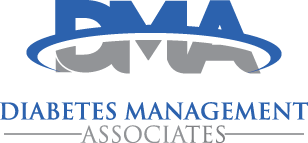How Do I Know if I am a Diabetic?
I get asked this question quite often. The real question here is ‘how do I know my glucose is controlled?’ The measure of glucose can be done in many ways.
BLOOD GLUCOSE MONITORS
There are many brands of glucose monitors which are available without a prescription. A small blood drop is required by sticking a finger. Alternate blood sites can be outer palm, forearm, calf, upper arm, or earlobe. Glucose monitor values can range from 20 to 600 mg/dl depending on the brand. Outside the extreme ranges would indicate ‘Lo’ or ‘Hi’.
Do note that alternate sites may reveal different blood glucose values than the fingertips because glucose is shifting through our body based on needs. For example, during exercise the muscles being used will need more glucose or fuel than your gut.
Always obtain glucose values from a fingerstick if you:
- need to take insulin
- think blood glucose is low
- are sick or stressed
- recently exercise or ate
The pro for glucose monitors is they are simple to use and the cost is relatively cheap, free to $60.
Con
- The negative or con of glucose monitors is that sticking yourself many times a day can be uncomfortable.
- Information is limited to what your glucose is at the moment. Blood glucose levels change frequently and sometimes quickly making a current value obsolete in 10-15 minutes.
- Glucose meter strips can be the biggest long-term expense and can be as much as $1.50 per strip depending on the brand, insurance preference, deductibles and promotions.
HEMOGLOBIN A1c
A1c is a blood test that measures the amount of glucose stuck on a red blood cell (RBC) which typically lives for 90 days or 3 months. The value is an average glucose.
The pro for A1c is the test is simple and easy to perform from a blood test that can be done in a health facility or at home. The value is a general indication of glucose control.
Cons
- Value is based on time and is typically done every 90 days although it is most relevant of glucose control for the prior 30 days. Insurance typically only pays for A1c every 90 days.
- An average glucose level which can be misleading. For example, a blood glucose of 50 mg/dl and 300 mg/dl would give an A1c of 7.7 which doesn’t sound to bad but neither glucose value are in a good range.
TIME IN RANGE
Time in Range (TIR) is the amount of time spend with blood glucose in a good range which is 70 to 180 mg/dl for most people. TIR can be calculated from a glucose monitor or continuous glucose monitor (CGM) such as Libre, Dexcom or Guardian.
The pro of TIR with a CGM device is that the data is complete, with some exceptions and is a better indicator of glucose control since time is not relevant. The device is easy to place and wear for up to 14 days depending on the brand. CGM can warn the wearer of low or high glucose levels prior to becoming urgent or emergent.
Cons
- TIR with glucose meter is helpful but limited to only the times a fingerstick glucose was done making data very limited.
- Insurance coverage is typically for those on insulin. Consider paying out-of-pocket or cash which is not unreasonable.
So, the blood glucose monitor and A1c are limited by time. Glucose monitor is a small amount of time while the A1c is a large amount of time. I try to explain this spatially. An A1c is like standing at the top of the Grand Canyon while the glucose monitor is like looking at the pebbles at the bottom. To determine if glucose is controlled, you would need to use both, glucose monitor AND A1c or simply wear a CGM periodically or continuously.
The American Diabetes Association (ADA) has specific glucose goals for ‘Older Adults’, ‘Children and Adolescents’ and ‘Pregnancy’. Goals should be tailored to each individual by their health care provider. So…. the GENERAL answer to glucose control is:
- Blood glucose fasting 80-130 mg/dl and after meals less than 180 mg/dl.
- A1c <7% without significant hypoglycemia.
- Time in Range of 70% or more.
Live Long, Live Healthy!
Dr. Julie Wood is a Nurse Practitioner and has been serving the Middle Tennessee area for more than 30 years, specializing in adults with obesity, prediabetes and diabetes. Office is located at 401 First Avenue, Mt. Pleasant, TN and statewide with telehealth. Dr. Wood can be reached at 931-325-5560, www.diabetesmgtassociates.com, info@diabetesmgtassociates.com.
Articles are meant to be informative and should never replace the advice of your health care provider.
12/19/21
